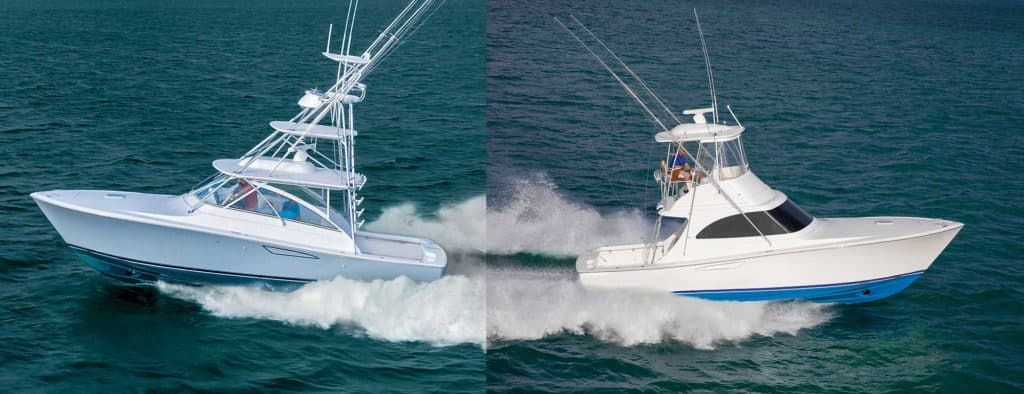
Building a model within a model is a frequent theme at the Viking Yacht Company, utilizing a hull to build a variation of distinct choices that cater to the specific needs of its customers. The new inboard diesel-powered Viking 38 Billfish and the 38 Open Billfish are prime examples and provided a good opportunity to compare the two popular boat types.
With speed and range, the 38 Billfish is a midsize convertible sport-fisherman that doubles nicely as a bluewater tournament contender, with ample overnight accommodations for the cruising family. The result is a nice compromise that covers all the bases when flexibility is required to meet a variety of on-the-water missions and experiences. Despite the flying-bridge boat’s amenities and features, Viking provides alternate opportunities in the same length overall with the 38 Open Billfish, an express-style cruiser that checks all the boxes in a handsome, racy-looking package. Faced with these choices, deciding which model best suits your needs requires due diligence, but it’s a fun ride and worth the trip to examine each boat to appreciate what makes it special.
Running
The 38 Billfish has an open flying bridge with a topside walk-around helm station. The visibility is excellent because of the height above the water, giving the operator an unobstructed view to all 32 points of the compass, perfect for fishing while watching the baits, as well as negotiating the surroundings while underway. Flanking lounges as well as a seat forward of the console provide ample room for guests to spread out and relax while taking in the views. A raised fiberglass dash is home for electronic navigation and communication equipment, as well as a fiberglass helm pod that can be customized with faux-teak finish, single-lever engine controls, and a stainless-steel steering wheel. The SeaStar Solutions Optimus steering is obedient and responsive, and delivers swift maneuverability with a light touch on the wheel. A ladder-back Release helm chair is standard. The available fiberglass hardtop and the Costa Clear enclosure provide weather protection. The Viking-made composite hardtop also features a compartment for recessed teaser reels, additional engine instrumentation and tri-color overhead lights.
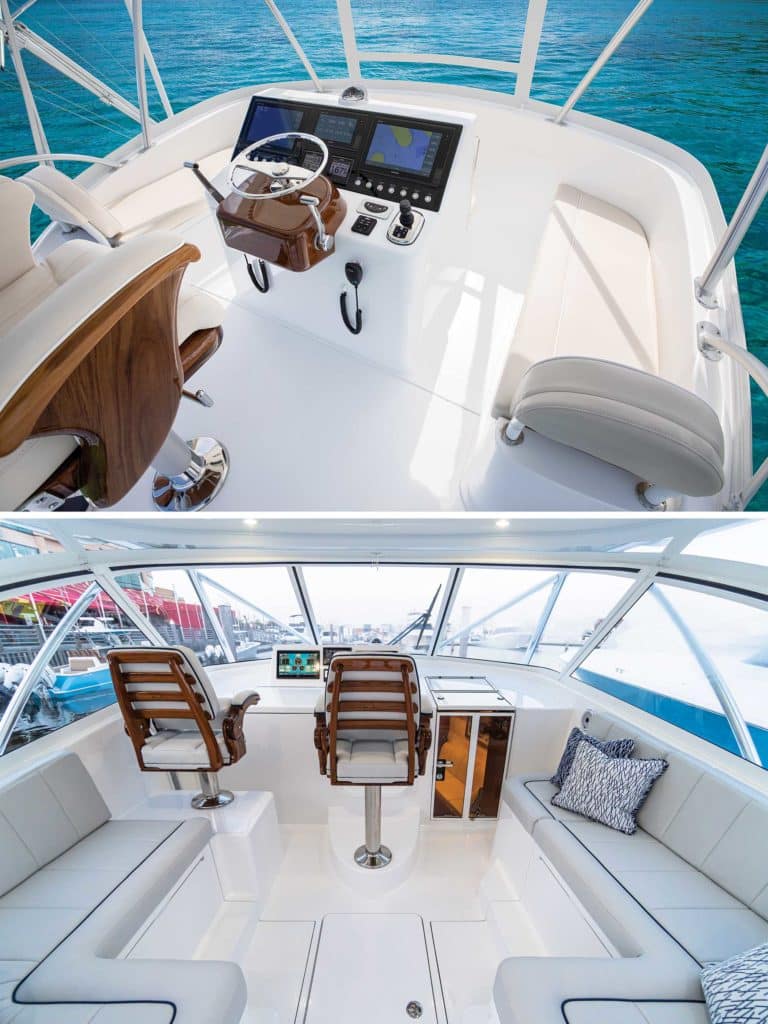
In place of the flybridge station, the 38 Open’s helm is on the main deck, a few steps from the 109-square-foot cockpit. Unlike the flybridge helm where the operator is in his own world while running the boat and somewhat isolated from the activity in the cockpit, the 38 Open’s skipper is in the middle of the action, a feature that appeals to fishermen who are apt to go boating short-handed of regular crew. Adding more conversation points, the command-deck helm comprises its center of attention with a companion seat to port and flanking L-shaped lounges. Guests sit high on the seats, affording good visibility and sociability with the helmsman. Electrically powered actuators lift the lounges for engine-room access, similar to the 38 Billfish. Mechanical installations—like those found aboard its stablemate—are top-notch.
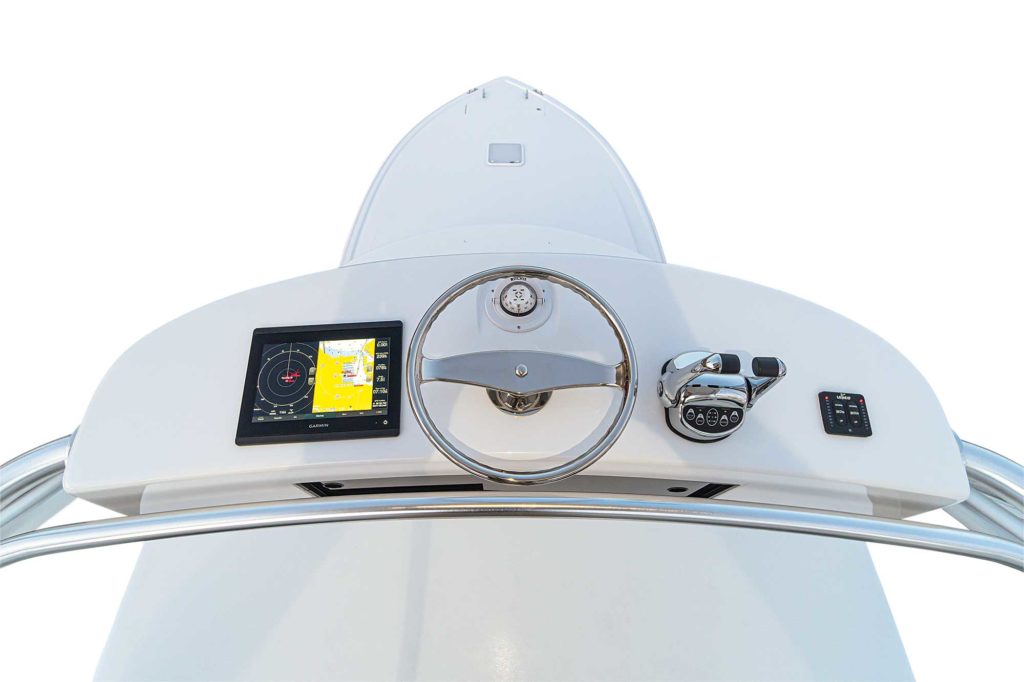
To enhance visibility at the helm, the operator stands on a raised platform or sits in a Release Marine helm seat. A fiberglass pod contains the engine controls and steering wheel, while electronics and a radio box nest forward and to port of the helm. A Costa Clear enclosure keeps the weather at bay.
Our Take: Compared to an express-style sans tower, a flybridge boat will always have a better view from the helm thanks to its height above the waterline.
Performance
Performance-wise, the Open Billfish is about 2 knots faster at top-end speed. Part of this is due to the approximate 1-ton difference in weight, but also the Palm Beach Towers’ tuna tower produces less wind resistance than the flybridge and its enclosure. Visibility from the tower is superb, and operating the 38 Open from the tower is an experience, not only for fishing but also when running through the shallows while exploring the Bahamas, where reading the water is a critical factor. So, it makes sense for many boaters to buy a tower for an express boat such as the 38 Open, unless bridge clearance is an issue. An express boat with the helm closer to water level needs to plane quickly for better sightlines—a factor not as relevant with a flying-bridge boat—so check that it does so when shopping. Both Billfish models proved sturdy handlers. The raked entry and 12-degree transom deadrise smooth out the ruts in a seaway.
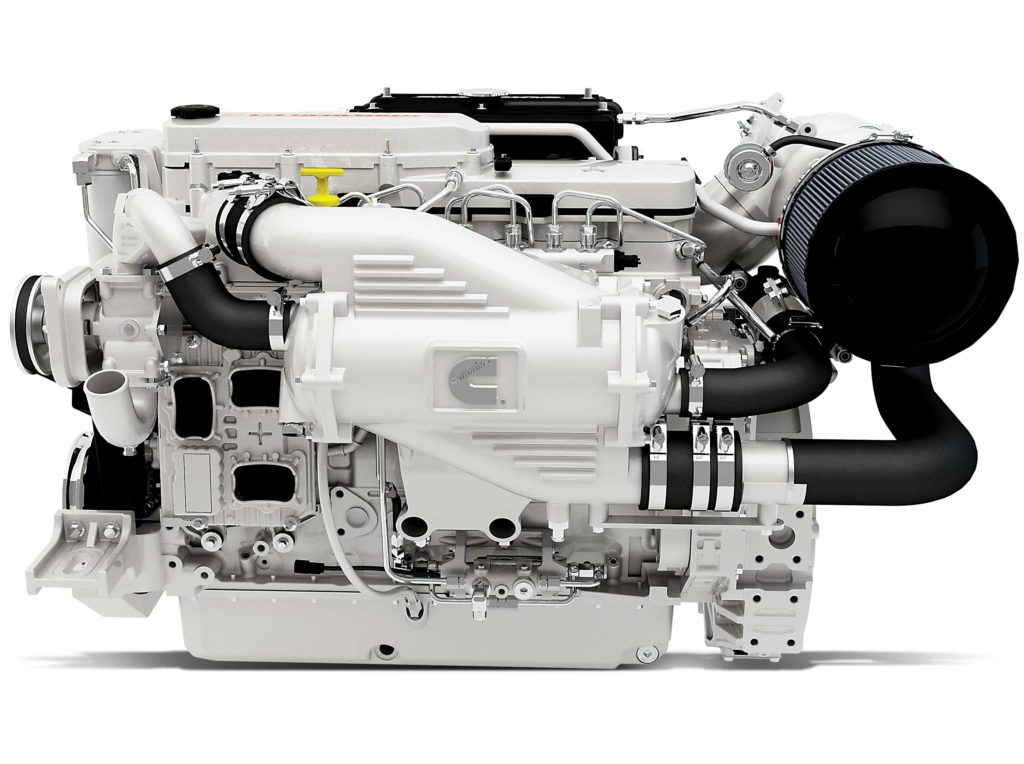
Our Take: It’s a tie…with a slight edge to the express, if top speed is a hot button for you.
Amenities
The three-sided deckhouse of the 38 Billfish with 81 inches of headroom is straightaway-practical, with creature comforts and ease of upkeep. Molded nonslip on the fiberglass sole provides sure-footedness and fast cleanups. The port side features a fiberglass table surrounded by a U-shaped lounge for four that converts to a berth for two. A nearby refrigerator keeps drinks handy without the need for ice runs to fill a cockpit cooler. A second lounge is on the starboard-side, which also conceals fishing-rod stowage below.
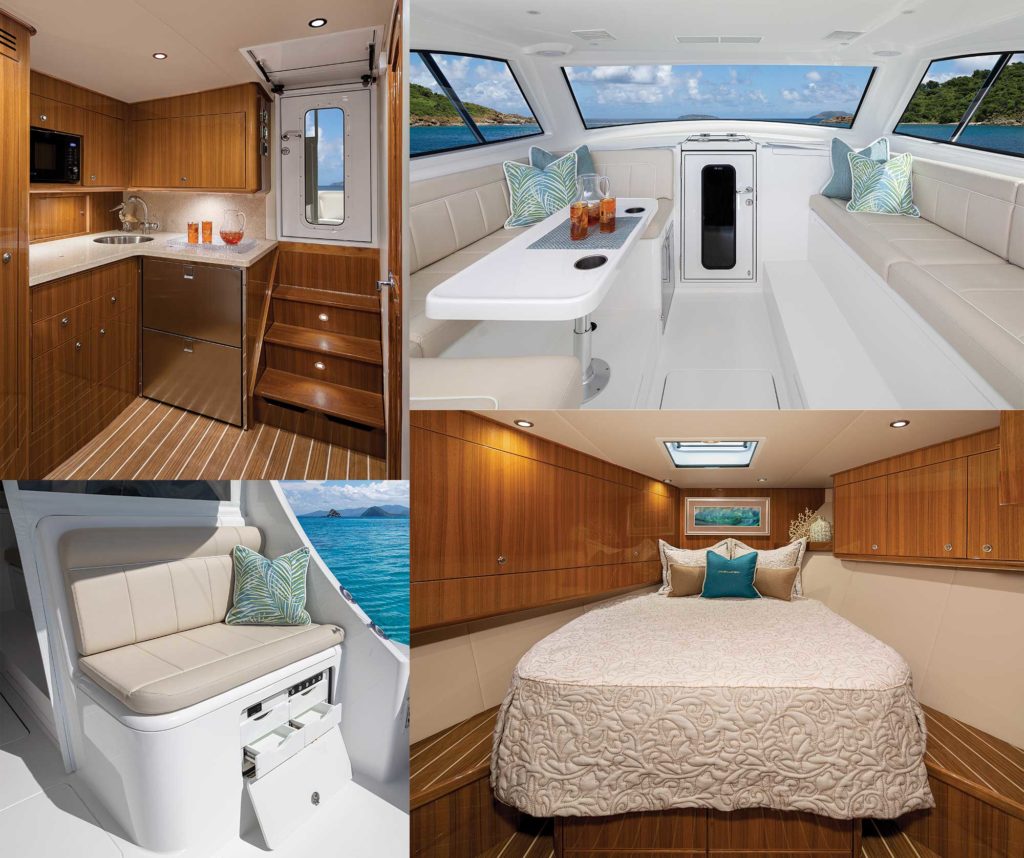
If desired, the 38 Billfish also can be ordered with a lower helm station in place of the starboard bench-style seat. This has become a popular option with boaters choosing to extend their season in the northern climes, as well as for those in tropical areas looking for more sun protection. The lower helm also can be equipped with reverse-cycle air conditioning, and climate control can be regulated by dropping the Costa Clear aft command-deck enclosure. Having an inviting salon means that when you come back from a day of fishing or cruising, there is a sizable and fully protected area to relax on the boat, an item that a large center console simply does not offer. Similarly, if you are looking for a place to have a meal, the deckhouse area is a well-suited social area.
As much as the 38 Billfish brings to the party with comfort and amenities, the 38 Open Billfish matches its sistership while approaching its mission with a totally different outlook and style. With its express panache, the 38 Open appears in fluid motion even while tied to the dock. The curved wraparound aluminum-frame windshield melds neatly in the fiberglass deck structure, while the Palm Beach Towers’ tuna tower is the icing on the cake.
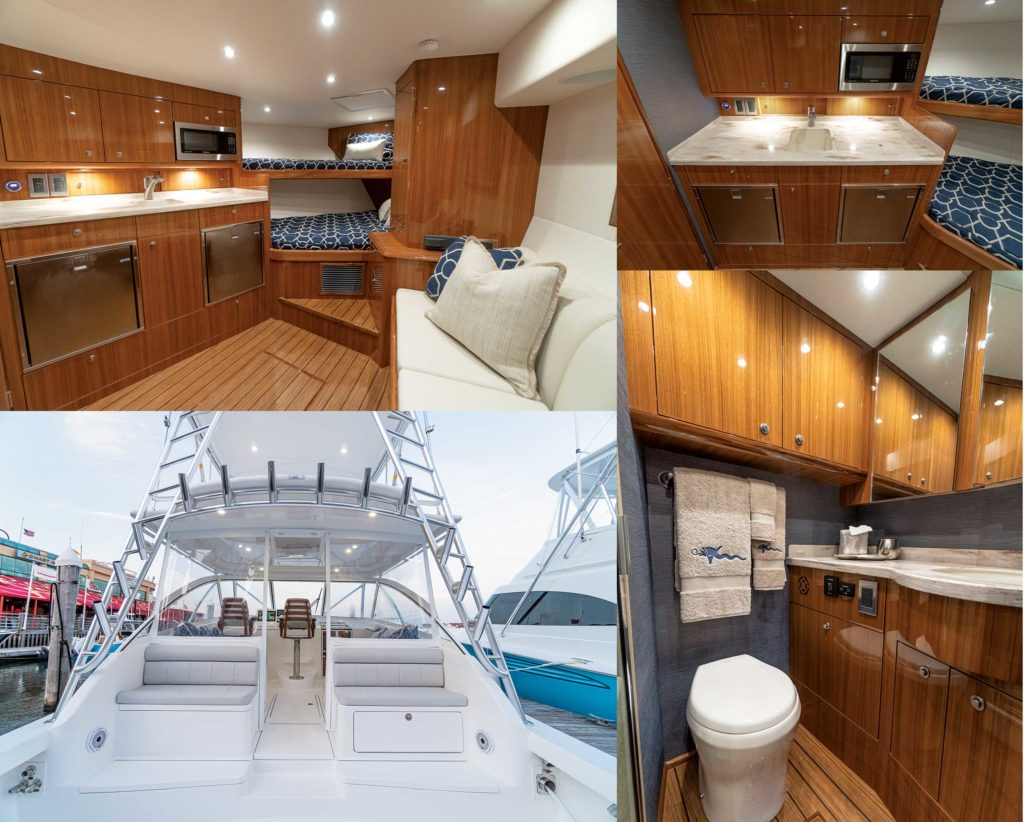
Aboard the 38 Open Billfish, a bi-fold glass-and-aluminum door leads to the air-conditioned lower accommodations. A teak staircase descends to a spacious cabin that takes full advantage of the boat’s 14-foot beam. An in-line galley to port carries the same appliances as the 38 Billfish, including the electric cooktop, microwave/convention oven, refrigerator and freezer, Corian countertops and stainless-steel sink, and similar stowage capacity for cookware and utensils. The lounge on the starboard-side also includes nap space and stowage galore, and serves as a comfortable perch for watching the flat-screen television on the aft bulkhead. A table would be a nice addition, although none was available on our test boat, hinting perhaps at the builder’s approach to make the 38 Open Billfish a more casual vessel rather than a full-fledged convertible. Nonetheless, one step up from the Amtico vinyl sole is a pair of berths in the forepeak that feature a double and single bunk in crossover style. The enclosed head was surprisingly large, especially the fiberglass shower stall.
Aboard the 38 Billfish, a glass-and-aluminum door leads to the air-conditioned lower accommodations with Amtico flooring, a galley, head and private sleeping area. Viking’s hallmark craftsmanship shines, with abundant high-gloss teak joinery, maple-lined cabinetry, drawers and hanging lockers. The L-shaped galley is equipped with an electric two-burner cooktop, a microwave/convection oven, stainless-steel sink, Corian countertops, refrigerator, freezer, and an eye-level AC/DC power-distribution panel.
Similar attention to detail is found in the enclosed head with Corian counters, vanity and medicine cabinet, fiberglass shower stall and Dometic marine toilet.
The master stateroom with an island double berth features an innerspring mattress, flat-screen television, stereo system with CD/DVD player, a pair of maple-lined hanging lockers and a Bomar hatch for ventilation. An optional layout offers double and single crossover berths.
Our Take: With its semi-enclosed deckhouse, the 38 Billfish has an amenities edge over the 38 Open’s express layout.
Cockpit/Bow
The cockpits of both boats are nearly identical and, as you would expect from Viking, proved well-equipped for fishing, cruising, diving and entertaining, with four flush rod holders and rounded coamings with tri-color lighting below. A walk-through transom door with a lift gate makes boarding easy from the dock or from the water, if you decide to add a fiberglass swim platform. The molded transom fish box doubles as a livewell or stowage compartment for dive gear. Raw- and freshwater washdown systems are standard, and for convenience there is a dockside water connection with a pressure-releasing valve under the forward gunwale. A pair of insulated fish boxes, each 45-by-18-by-16 inches, drain out through an auto sump pump and double as dry-stowage bins if needed. A lazarette hatch leads below to steering and plumbing systems. Each lockable hatch is outfitted with a thick gasket and stainless-steel gas pistons. A bait freezer, tackle and gear stowage, an aluminum mounting plate laminated into the sole to accommodate a fishing chair or a table stanchion, a fiberglass boarding box and a 50-amp/220-volt dockside electrical connection are among a long list of standard items on both models.
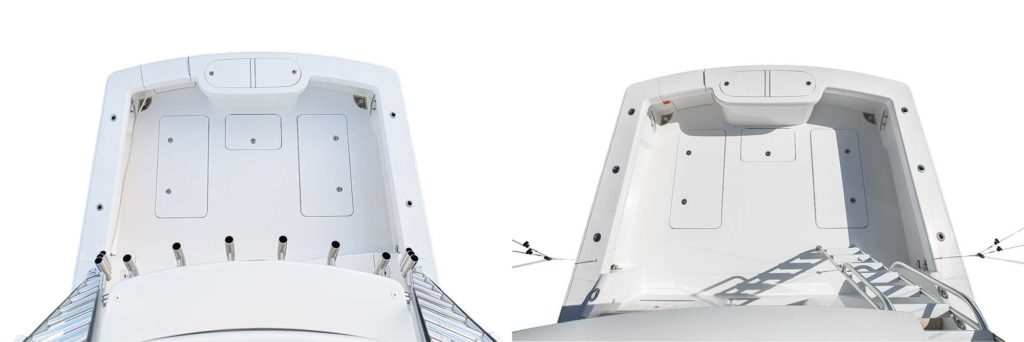
Note too that an aluminum bow rail is standard on each model, though many owners opt to have this item omitted during the build cycle. However, Viking laminates backing plates in the deck should you choose to install a bow rail at a later date. Another foredeck feature on each boat is a freshwater line in the anchor-rode locker to rinse salt water or mud from the rode before storing it in the well. It also serves as a way to clean off the bow area without dragging a hose aboard from the dock.
Our Take: Tie: Both the Billfish and the Open offer excellent cockpit and foredeck accoutrements.
Rigging and Service Access
On the 38 Billfish, a centerline hatch plus both lounges, which lift with electrical actuators, access the Awlgrip-finished engines and machinery compartment. Viking is well-regarded for its engine rooms, and these smaller Vikings are cut from the same cloth. Finish, light and service access proved terrific. A five-point oil-transfer system empties and fills the engines, transmissions and generator. A Delta T ventilation system with supply and discharge fans induces proper fresh air for combustion and provides water-intrusion suppression to keep the engine room dry.
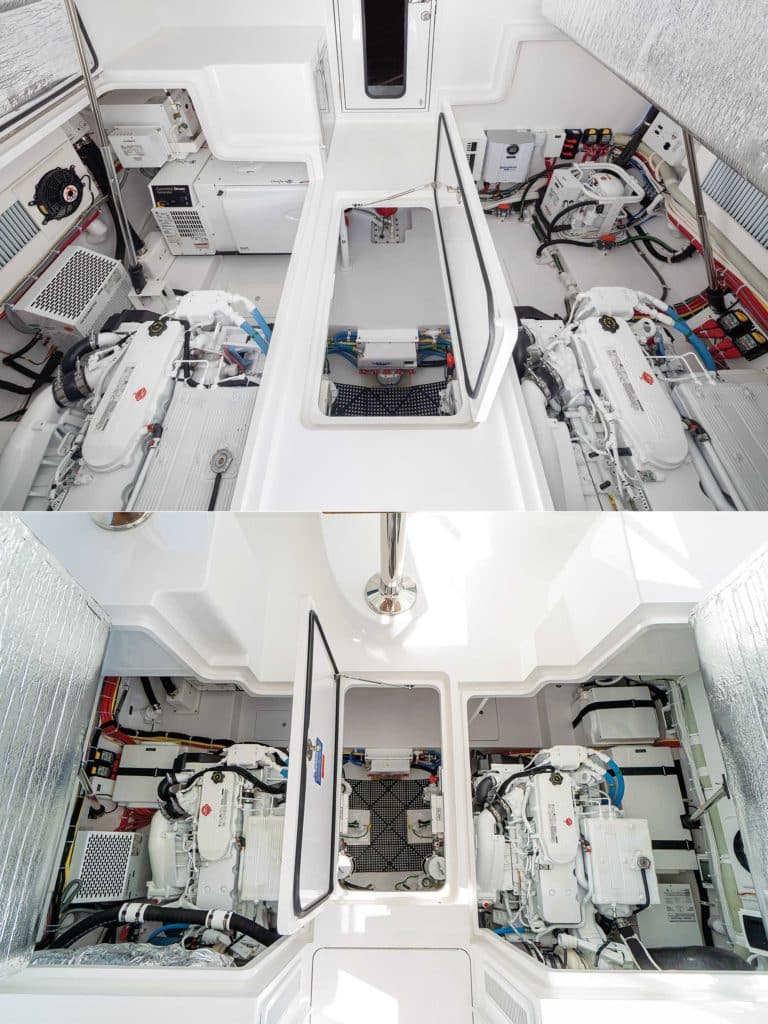
Fittings are labeled, wires for 110-, 24- and 12-volt service are chafe-protected and runs properly supported, plumbing fixtures are bonded, and there is even room for a Seakeeper SK 6 gyrostabilizer. A 9 kW Onan generator is standard with a fuel/water separator and provides ample power for equipment, other electrical accessories and entertainment items. A 13.5 kW Onan genset is optional. Viking also offers prep and pre-wire options for later-to-be-installed accessories such as watermakers and ice machines.
Our Take: Tie: Service access and rigging are as good as it gets aboard both boats.
Construction
Both Billfish models feature a blister-resistant modified-vinylester resin in the hull skin, with a custom-blended polyester resin in structural laminates, topsides, bridges and hardtops. Isophthalic gelcoat shows well, with a deep, glossy finish. The hull is molded fiberglass, combining closed-cell foam and end-grain balsa in selected areas to enhance strength and stiffness, along with composite bulkheads and fiberglass stringers. Fiberglass side through-hull fittings add a custom touch to the boats.
Our Take: Tie: Both boats naturally share the same excellent construction for which Viking Yachts is renowned.
What’s the quick takeaway? The Viking 38 Billfish offers more comfort for cruising or entertaining by virtue of its deckhouse. The Viking 38 Open offers faster top speeds and lower bridge clearance (if one forgoes the purchase of a tower). If a midsize inboard is on your short list and you can’t decide between a flying-bridge boat or an express, comparing these new Viking models is a great place to start.
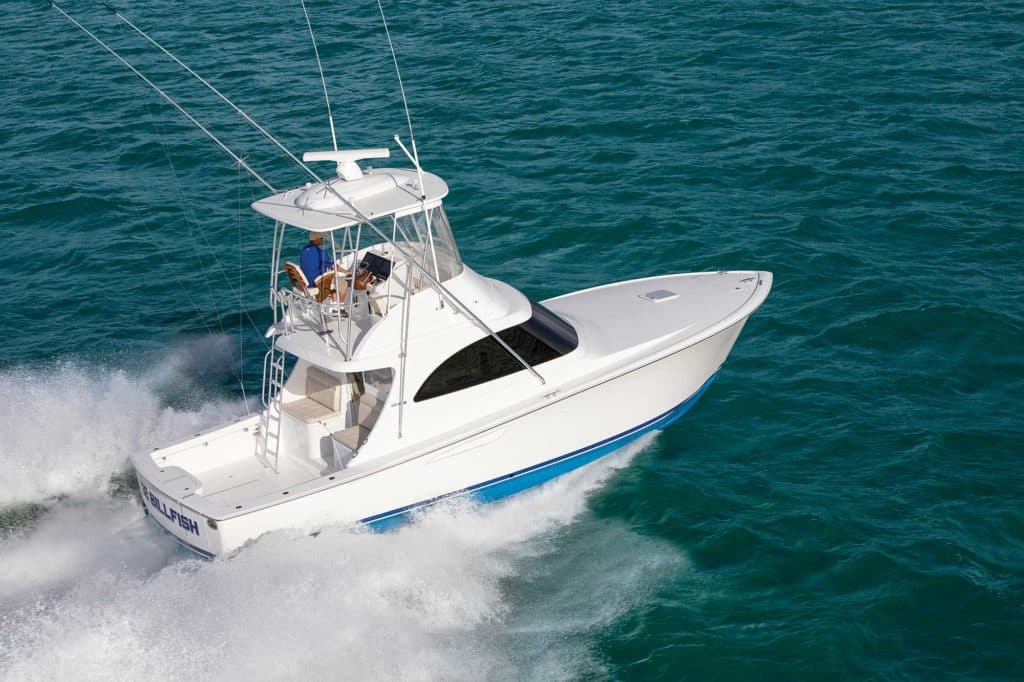
Viking 38 Billfish
How We Tested
Engines: Twin 542 hp Cummins QSB 6.7 diesel inboards
Props: 4-blade Acme nibral
Gear Ratio: ZF 280 1A 2.227:1
Fuel Load: 230 gal.
Water Load: 69 gal.
Crew: 2
Price: $1,097,424 (as tested)
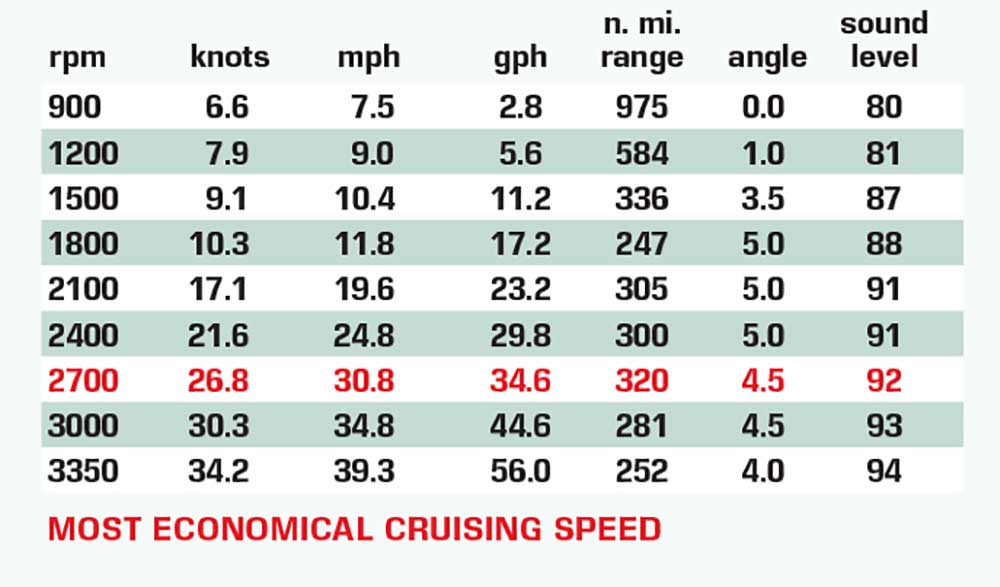
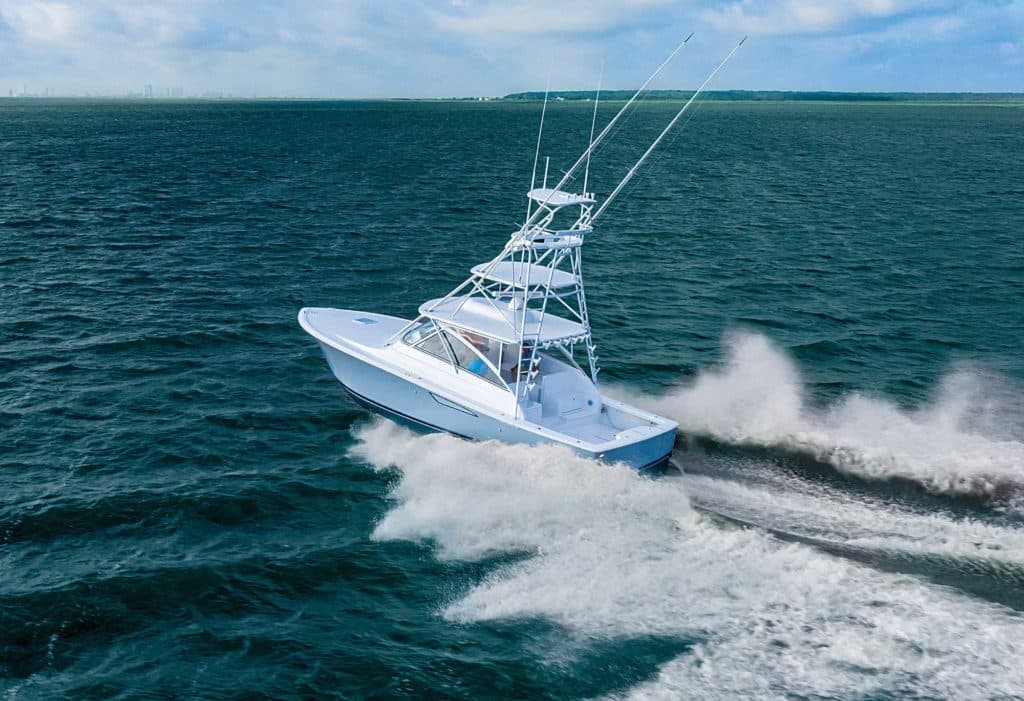
Viking 38 Open Billfish
How We Tested
Engines: Twin 542 hp Cummins QSB 6.7 diesel inboards
Props: 4-blade Acme nibral
Gear Ratio: ZF 2.227:1
Fuel Load: 285 gal.
Water Load: 69 gal.
Crew: 3
Price: $1,142,959 (as tested)
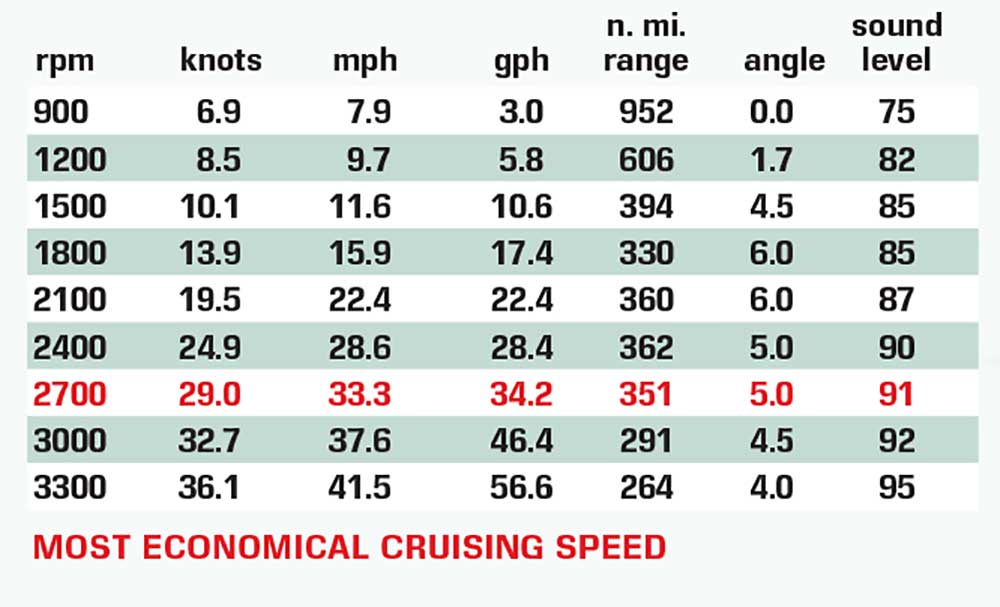
Viking Yacht Company – 609-296-6000; vikingyachts.com









